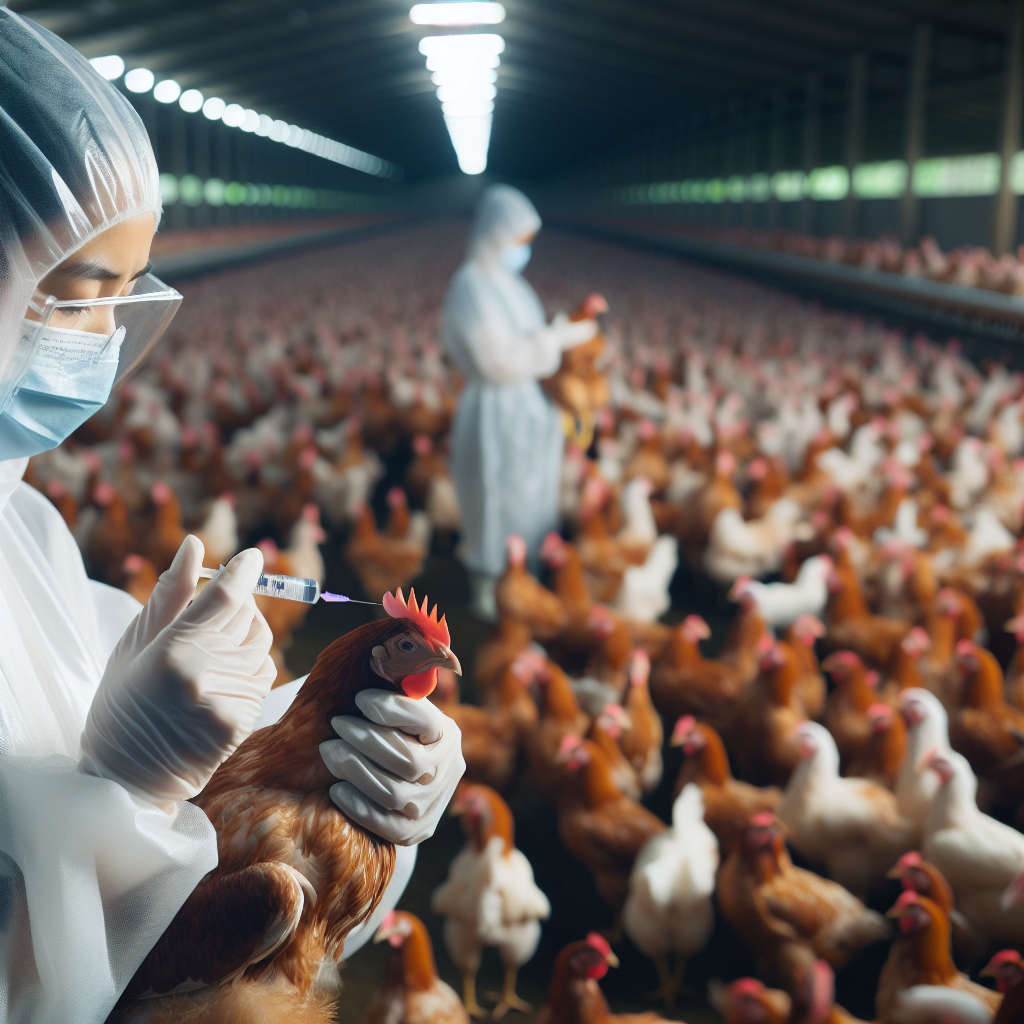Have you ever wondered how regional regulations can affect the selling or transport of chickens and their products? Well, you’re about to find out! In this article, we will explore the various ways in which these regulations impact the poultry industry. From restrictions on transportation methods to guidelines for selling and labeling, regional regulations play a crucial role in ensuring the safety and quality of chicken products. So, grab a cup of tea and get ready to dive into the fascinating world of chicken regulations!
Definition of Regional Regulations
Overview of regional regulations
Regional regulations refer to laws and rules that are specific to a particular geographical area or region, governing various aspects of the selling, transport, processing, and labeling of chickens and chicken products. These regulations are put in place to ensure the safety, quality, and fair trade practices in the poultry industry. They vary from one region to another, depending on the local customs, market conditions, and government policies.
Examples of regional regulations
Regional regulations can include restrictions on selling chickens, requirements for labeling, certification and licensing, transportation regulations, biosecurity measures, temperature control requirements, regulations on processing chicken products, packaging and labeling requirements, standards for quality and safety, and regulations on waste management and disposal. These regulations can differ significantly between regions, reflecting the unique challenges and priorities faced by each region.
Impact on the Selling of Chickens
Restrictions on selling chickens
Regional regulations often impose certain restrictions on the selling of chickens to ensure public safety and prevent the spread of diseases. These restrictions may include limitations on selling live chickens within certain areas or requiring specific permits or licenses for selling chickens. These measures aim to control the movement of chickens and minimize the risk of disease transmission among poultry farms and consumers.
Requirements for labeling
Regional regulations also govern the labeling of chicken products, requiring accurate and informative information to be provided to consumers. These requirements can include the disclosure of ingredients, nutritional information, country of origin, and any potential allergens present in the product. The goal is to ensure transparency, promote consumer awareness, and allow them to make informed choices about the chicken products they purchase.
Certification and licensing
In many regions, certification and licensing are mandatory for individuals or businesses involved in the selling of chickens. This process involves meeting certain criteria, such as following specific hygiene and safety protocols, implementing appropriate biosecurity measures, and maintaining the required standards. Certification and licensing help establish credibility and trust in the poultry industry, ensuring that consumers are receiving safe and quality products while also encouraging fair trade practices among sellers.
Impact on the Transport of Chickens
Transportation regulations
Transportation regulations focus on ensuring the welfare and safety of chickens during transportation from farms to processing plants or retail locations. These regulations may include guidelines on the size, design, and ventilation of transportation vehicles, as well as requirements for proper handling, loading, and unloading procedures. The aim is to minimize stress and injuries to chickens during transit and prevent the spread of diseases.
Biosecurity measures
Regional regulations also emphasize the implementation of biosecurity measures during the transport of chickens. This involves taking steps to prevent the introduction and spread of diseases by maintaining strict hygiene practices, disinfecting equipment and vehicles, and ensuring personnel involved in the transport process adhere to proper biosecurity protocols. By minimizing the risk of disease transmission, biosecurity measures help protect the health of the poultry population and safeguard the regional poultry industry.
Temperature control requirements
Maintaining appropriate temperature conditions during the transport of chickens is crucial to preserve their quality and safety. Regional regulations often mandate temperature control measures to ensure that chickens are transported under suitable conditions, preventing spoilage and reducing the risk of bacterial growth. These requirements can include the use of refrigerated vehicles or the monitoring of temperature levels throughout the transportation process, guaranteeing that chicken products reach consumers in optimal condition.
Effect on Chicken Products
Regulations on processing chicken products
Regional regulations establish guidelines and standards for the processing of chicken products. These regulations cover various aspects, such as the use of approved processing methods, the prevention of cross-contamination, and the control of bacterial pathogens. By clearly defining the processing requirements, regional regulations help maintain product integrity, ensure compliance with food safety standards, and minimize health risks for consumers.
Packaging and labeling requirements
Packaging and labeling requirements are crucial in the poultry industry to provide consumers with accurate and relevant information about chicken products. Regional regulations often specify the type of packaging materials that should be used, along with guidelines for proper labeling of these products. This can include details about the product’s composition, weight, storage instructions, and expiration dates. These requirements play a vital role in preventing misleading or deceptive practices, promoting transparency, and ensuring consumer confidence in the regional poultry market.
Standards for quality and safety
Regional regulations set standards for the quality and safety of chicken products, covering factors such as appearance, texture, flavor, and nutritional attributes. These standards aim to maintain consistent product quality, protect consumer health, and encourage fair competition within the poultry industry. Compliance with these regulations helps establish trust among consumers, fosters market competitiveness, and strengthens the overall reputation of regional chicken products.
Regional Differences in Regulations
Comparison of regulations in different regions
When it comes to regional regulations, significant differences can exist between different regions. These differences can be influenced by a variety of factors, including cultural norms, historical practices, available resources, and the specific concerns and priorities of each region. For example, regulations in one region may focus more on biosecurity measures, while another region may emphasize food safety standards. Understanding these differences is crucial for businesses involved in the selling and transport of chickens, as it helps inform their compliance strategies and adapt their operations accordingly.
Trade barriers and harmonization efforts
Divergent regional regulations can sometimes create trade barriers and hinder the smooth flow of chicken products between regions. These barriers can include differences in certification requirements, labeling standards, and processing methods. However, recognizing the importance of international trade and cooperation, efforts are often made to harmonize regulations and reduce these barriers. Regional agreements or international organizations work towards standardizing regulations, streamlining processes, and fostering mutual recognition of certifications, facilitating the movement of chickens and their products across regions.
Regulatory Challenges and Compliance
Navigating complex and evolving regulations
Complying with regional regulations can be a challenge for businesses due to their complexity and ever-changing nature. Regulations can vary not only between regions but also over time as new laws are enacted or existing regulations are revised. Staying up to date with these changes requires continuous monitoring and a thorough understanding of the legal framework. This can be particularly burdensome for small-scale businesses or those operating across multiple regions. Engaging legal experts and industry associations can help navigate these challenges and ensure compliance with regional regulations.
Costs and administrative burden
Compliance with regional regulations often comes with financial implications and administrative burdens for businesses. Costs may include investing in infrastructure upgrades, implementing specialized training programs, or obtaining certifications. Moreover, businesses must allocate resources for ongoing monitoring, record-keeping, and reporting requirements to demonstrate compliance with regional regulations. While these costs can be significant, they are essential investments in ensuring the quality and safety of chicken products and maintaining consumer trust in the regional poultry industry.
Enforcement and penalties
Regional regulations are backed by enforcement mechanisms and can carry penalties for non-compliance. These penalties can range from warnings, fines, product recalls, to temporary or permanent closure of facilities. Stringent enforcement serves as a deterrent to non-compliance and helps maintain the integrity of regional regulations. Businesses must understand the consequences of non-compliance and take all necessary measures to ensure adherence to regional regulations to avoid potential financial and reputational damage.
Role of International Agreements
Global standards for poultry trade
International agreements play a crucial role in establishing global standards for the trade of chicken and chicken products. Organizations like the World Trade Organization (WTO) and the Food and Agriculture Organization (FAO) work towards developing and promoting harmonized regulations that facilitate international trade while ensuring the safety and quality of poultry products. Global standards contribute to simplifying cross-border transactions, reducing trade barriers, and fostering fair competition among countries.
Impact of bilateral and multilateral agreements
Bilateral and multilateral agreements between countries or regions further play a significant role in shaping regional regulations and trade practices. These agreements aim to promote cooperation, streamline regulatory processes, and enhance market access for chicken products. By aligning regulatory requirements and fostering mutual recognition of certifications, bilateral and multilateral agreements reduce the administrative burden for businesses involved in the selling and transport of chickens across different regions. They also contribute to the overall growth and sustainability of the regional poultry industry.
Economic and Market Effects
Implications for regional poultry industry
Regional regulations have significant implications for the regional poultry industry. They influence the cost structure, production practices, and competitiveness of businesses involved in the chicken value chain. Compliance with regulations may require additional investments in infrastructure, personnel, and certifications, impacting the overall cost of production. Moreover, variations in regional regulations can create opportunities for some businesses while presenting challenges for others. Companies that can effectively navigate and comply with regional regulations gain a competitive edge in the market, while those unable to do so may face difficulties in meeting customer requirements and accessing certain markets.
Price fluctuations and market competition
The impact of regional regulations on the selling and transport of chickens and their products can lead to price fluctuations and market competition. Compliance with regulations may result in increased production costs, which can then be reflected in higher prices for chicken products. Additionally, regional regulations that create trade barriers or restrict market access may limit the competition within the industry, allowing local producers to have an advantage over imported products. These dynamics can influence market dynamics, consumer choices, and the overall profitability of businesses operating in the regional chicken market.
Consumer Protection and Health
Food safety regulations
Regional regulations play a critical role in ensuring food safety in the poultry industry. These regulations outline specific requirements for the handling, processing, and storage of chicken products to prevent contamination and minimize the risk of foodborne illnesses. By setting standards for hygiene practices, microbial limits, and testing procedures, regional regulations protect consumer health and confidence. Consumers can trust that chicken products they purchase comply with rigorous safety standards, providing them with peace of mind and reassurance about the products they consume.
Labeling for allergens and dietary requirements
Regional regulations often require clear and accurate labeling of chicken products to address the diverse dietary needs and preferences of consumers. These regulations may mandate the disclosure of potential allergens present in the product, allowing individuals with specific dietary restrictions or allergies to make informed choices. Additionally, some regional regulations may require labeling to indicate whether the product is organic, free-range, or produced without the use of hormones or antibiotics. These labeling requirements enhance consumer transparency and support a more informed purchasing decision-making process.
Environmental Impact
Regulations on waste management and disposal
Regional regulations encompass measures to minimize the environmental impact of the chicken industry. These regulations focus on waste management and disposal practices to prevent pollution and protect ecosystems. They may specify guidelines for proper manure management, wastewater treatment, and the use of environmentally friendly practices. By promoting responsible waste management, regional regulations help ensure the sustainability of the poultry industry and mitigate negative environmental consequences.
Sustainability practices in chicken farming
Regional regulations also encourage sustainability practices in chicken farming. These practices aim to reduce the industry’s ecological footprint and promote long-term viability. Regional regulations may advocate for the use of renewable energy sources, efficient resource management, and environmentally friendly production alternatives. By incentivizing the adoption of sustainable farming practices, regulations contribute to the preservation of natural resources, the reduction of greenhouse gas emissions, and the overall sustainability of the regional chicken industry.
In conclusion, regional regulations have a significant impact on the selling, transport, and processing of chickens and their products. These regulations ensure the safety, quality, and transparency of the poultry industry. Understanding and navigating regional regulations are essential for businesses involved in the chicken value chain to maintain compliance, sustain consumer trust, and remain competitive in the regional market. International agreements and harmonization efforts further contribute to streamlining trade practices and fostering cooperation among regions, while considerations for consumer protection, health, and the environment drive the development of regional regulations.




